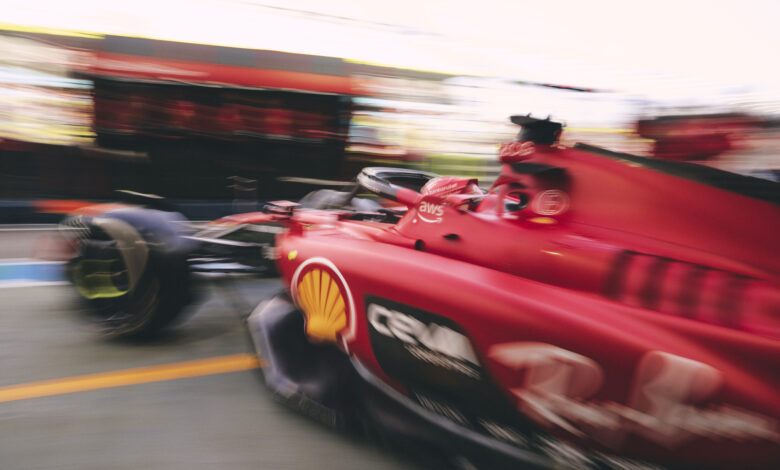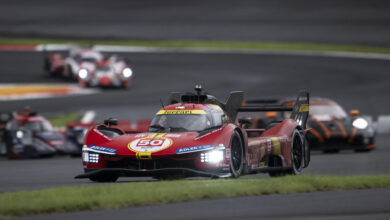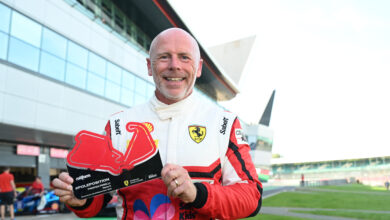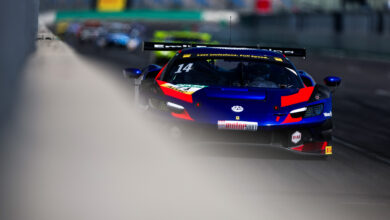Racing on the most famous figure of eight track
The second race of this Far East double-header is the Japanese Grand Prix at Suzuka.

The famous figure of eight. The circuit, the only one on the calendar featuring a figure of eight, is one of the most popular with the drivers, with its classic corners and the enthusiasm of the Japanese fans who pack the grandstands, showing great support for all the drivers, albeit while cheering local hero Yuki Tsunoda that little bit more. The track rises and falls and presents a mix of high speed corners and slower sections such as the tricky final chicane. Highly rated in the Formula 1 corner canon are the run of flowing esses in the first sector, Spoon Curve, a semi-circular banked turn with a constant radius and the legendary 130R, a fearsome highspeed turn, which in today’s cars is taken almost flat out.
Medium downforce, engine and tyres work hard. Aerodynamic downforce level is medium to low and an important area is tyre management, as the rubber is stressed from the many high speed corners. There are four heavy braking points and the layout is also hard on the Power Unit, especially the combustion engine component, which runs at maximum revs for around 70% of the lap.
With Singapore behind us, we immediately focused on the Japanese Grand Prix, one of the most enthralling races on the calendar for teams and drivers. The Suzuka track is very different to Monza and Marina Bay and it will give us the opportunity to see how the SF-23 performs in high speed corners with a medium-low aero set-up.
We will tackle this weekend with the same approach we have adopted at the past few races, where we made further progress in terms of how we operate at the track. We are expecting to once again bring home plenty of points, as we continue to fight for second place in the Constructors’ championship.
Frédéric Vasseur
Team Principal
Ferrari Stats
GP entered 1067
Seasons in F1 74
Debut Monaco 1950 (A. Ascari 2nd; R. Sommer 4th; L. Villoresi ret.)
Wins 243 (22.77%)
Pole positions 246 (23.05%)
Fastest race laps 259 (24.27%)
Total podiums 802 (25.08%)
Ferrari Stats Japanese GP
GP entered 36
Debut 1976 (C. Regazzoni 5th; N. Lauda ret.)
Wins 7 (19.44%)
Pole positions 10 (27,78%)
Fastest race laps 7 (19.44%)
Total podiums 24 (22.22%)
Three questions to…
ANDREA LANDI, HEAD OF VEHICLE DYNAMICS
1. Suzuka is a favourite track for the vast majority of drivers, what are its technical characteristics?
Suzuka is special, because a bit like Silverstone and Spa-Francorchamps, it offers a wide variety of corner types, from the slowest to the quickest, while the straights are long enough to require a relatively low downforce level. Obviously, this makes the car harder to drive in those corners where aero downforce aids stability. In addition, the drivers need to build up a lot of confidence to tackle its high speed corners. The wind can also upset the cars, so they need to perform consistently whatever the weather conditions.
2. The tyres come under a lot of stress here, so what is the key to managing them on this track?
Because of its high speed corners, Suzuka puts a lot of energy through the tyres. It affects both the fronts and rears, but mainly the fronts, which means we can see a significant drop in performance during the race if one is not careful. To be “careful” one has to manage the tyres, limiting the amount of energy going through them so as to optimise race stint length. That can mean giving up a bit of performance over each single lap to reduce the average degradation thus allowing a quicker overall stint.
3. What about your time with Ferrari? Tell us what it means to you to don the red team kit?
I’ve actually joined Ferrari twice. The first time came twenty years on from doing my university thesis there and then I returned after a nine year break working in other motor sport categories. I am Head of Vehicle Dynamics, a department made up of three groups which support on-track activity, work on development of the next car and focus on the important aspect of tyre management. In my opinion, Ferrari is the team everyone would like to work for and I think that being part of the Scuderia in Formula 1 is the aim of every engineer with a passion for motorsport. Personally, I consider it a great privilege as well as a great challenge, the goal being to get the Prancing Horse back to the top of this category.
Profile
Andrea Landi
Nationality: Italian
Born: 8/9/77
In: Piombino (Tuscany)
Japanese Grand Prix: facts & figures
4. Japanese cuisine’s world ranking according to the 2022 Taste Atlas awards. Italy tops the table with a score of 4.72 out of 5, followed by Greece and Spain. Predictably, the Japanese dish getting the most plaudits is sushi.
47. The number of Japanese Grands Prix, of which 36 were Formula 1 World Championship rounds. The race (albeit for sports cars) was first held in 1963, won by Peter Warr at the wheel of a Lotus. Seven victories can be attributed to “prophets in their own land” although these wins were not in a world championship event. The first Japanese winner was Yoshikazu Sunako in 1966 at the wheel of a Prince. The best home results in a World Championship race in Japan came courtesy of Aguri Suzuki, who finished third in 1990 on a Lola, as did Kamui Kobayashi in 2012 on a Ferrari powered Sauber. The most successful driver of all is Michael Schumacher with six wins.
67. Contrary to the popular perception that Japan is made up of densely populated cities and towns, this figure is actually the percentage of its land mass – over two thirds of its total – that is forest.
98.5. The percentage of the Japanese population that’s indigenous, so almost all of it. The Far Eastern country has historically been one of the most closed nations on earth. In fact, in 1635, by decree of the Shogun Tokugawa Lemitsu, the country was closed to foreigners for over 200 years, with severe penalties for anyone using goods imported from other countries, particularly European nations. The first to set foot in Japan from the Old Continent were the Portuguese who landed in Nagasaki in 1543, introducing Tempura cooking, which survived the ban on all things foreign, going on to become a staple of Japanese cuisine.
2000. The tonnes of fish sold every day at Tokyo’s Tsukiji Market, the most famous in all of Japan. It is home to the most famous daily tuna fish auction in the world. Anyone wishing to attend needs to get up early for the 2.30 in the morning start. Head for the seafood information centre and get in line, as admission is very limited and allowed on a first come-first served basis.




